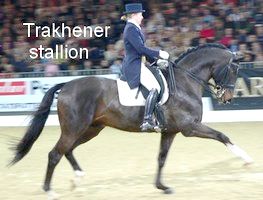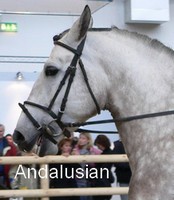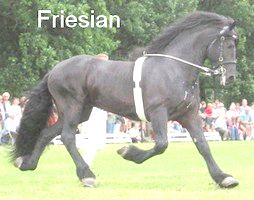Warmbloods are amazing animals. They are some of the most beautiful horses in the world, with a versatility that is unbelievable.
Warmbloods, unlike what many people think, are a true breed. All of the studbooks are closed. What this means is that only a horse of a certain breed can be registered in the studbook for that breed. The only exception is individuals of other breeding that are deemed to be able to improve the bloodline characteristics of the current breed. This is shown through performance records and the success of offspring in competition.
The recent opening of the Trakhener studbook is due to a loss in type of modern Trakheners.
There are various types of Warmbloods with origins around the world:
The Hanoverian
The Hanoverian’s originate from Germany. Their primary use is for dressage and show jumping. These horses are mildly temperamental, with more of a calmness in nature than many horse breeds. The most common Hanoverian coloring is Chestnut, Bay and Grey. The Hanoverian Horse is a well built, well put together horse with much success in the disciplines of dressage and show jumping. This breed tends to be very versatile.
The Holsteiner
The Holsteiner originates from Germany, usually reaching 16 to 17 hands. These horses are mildly temperamental and are used for show jumping, dressage and reining. They tend to be bay in color, but could be any solid coloring. Most Hosteiners have a defined canter that tends to be very expressive, but lacks an impressiveness at the trot. They are typically well known as excellent jumpers but have made their imprint on the dressage community.
Dutch Warmblood
The Dutch Warmblood’s originate from Holland and are typically very easy going and calm in nature. These good tempered horses are built well, running around 16 to 17 hands. They are known to excel at all disciplines.
Friesian
The Friesians originate from Holland and Germany with the studbook now kept in Germany, the FPZ. They are mildly temperamental growing to a huge size of 17 hands. They are primarily used for dressage and reining but are sometimes seen on the show jumping circuit. These horses are also used for trick training, being widely versatile and very easily trainable. There are distinct characteristics of the Friesians. Baroque, which is mainly upright, with higher action and more feathering with a heavier mane and tail. Traditional, which is heavier and more drafty usually used for driving, and Sport Horse, which is used for all types of riding and driving. These horses are amazing. Very versatile with a very calm temperament for such an enormous horse.
Swedish Warmblood
The Swedish Warmbloods originate from Sweden, obviously. They will grow to be 16 to 17 hands. The are used for show jumping, dressage and reining. Their coloring is all solid, predominantly Chestnut. The Swedish Warmbloods are one of the youngest warmblood breeds , so true “type” is not quite defined. Mainly having solid movements, with the conformation and their temperament being highly variable.

Dressage Trakener
Trakhener
The Trakheners originate from Poland and East Prissuia. They tend to be a little more temperamental than a lot of other warmbloods. They are used for dressage, jumping and eventing. Coloring is mainly solid with defined characteristics of nice movements with good push from behind. They tend to be a bit stubborn and even difficult at times, although there are some very lovely Trakheners. This breed possess a strong competitive drive owing perhaps to the large amount of Thoroughbred blood most carry. This is the only studbook still “open” in an attempt to further refine and define the Trakhener breed.
Oldenburg
The Oldenburgs originate from Germany. They grow to the large size of 16 to 17 hands. These horses are very calm and loveable. There coloring is solid but any color. They are primarily used for dressage and jumping. They were the first studbook with an American Division. Interestingly enough, all American Warmbloods approved by the ISR are registered as Oldenburgs, regardless of their actual parentage.

Andalusian Horse
Andalusians
The Andalusians originate from Spain. They are smaller in height, ranging from 14.3 to 16 hands. They are used for dressage, bullfighting, parades and trick training. They come in solid colors, including mulberry. Bay and grey are the most common. Black and Dun are the least common. Andalusians are classically styled Baroque horses. They have thick manes and tails and tend to have high, lofty actions for their size. The Spanish Olympic Team was comprised entirely of Andalusians for the 2000 Games.
Horses are an amazing animal, no matter what the breed or bloodlines. They love their owners and one forms an attachment to their horse like no other. I couldn’t imagine my life without my horse.
About the Author: Nanette Hughston is a freelance writer from the southern United States Region. She has a bachelor’s degree in finance. She rides dressage with Grand Prix Level Trainer, Tracy Masterson at Highlife Farms, Orlando, FL. For more information and articles please see her website or visit her training site for dressage and hunter/ jumper information.
